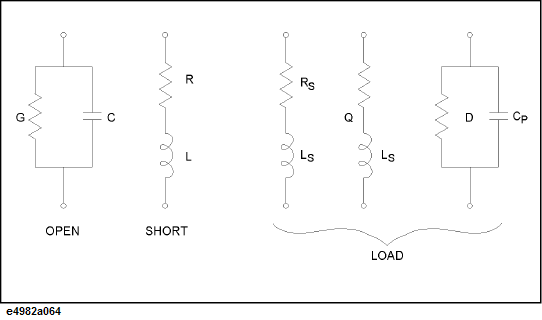
Other topics about Calibration and Compensation
Before starting calibration, the characteristic values of the open/short/load standards used for calibration must be set in advance.
For the E4982A, define the calibration kit by using the circuit model shown below.
Follow these steps to define the calibration kit.
Press Stim Table.
Click on the Cal Kit tab.

Select the table number you want to define the calibration kit.
Select the calibration kit (16195B or User) under Cal Kit.
If you have selected 16195B, the initial value of the 16195B calibration kit will be used as the defined calibration kit. No further setting is required.
If you have selected User, continue with the following steps.
If you want to use the same definition for all measurement points in the measurement point table, select the Fixed Model check box.
If you have selected Fixed Model, enter the calibration kit definitions at measurement point number 1. For other measurement points, the same definition entered at measurement point number 1 is automatically entered.
Select the Load Type from the drop down list.
Enter the open/short/load definitions for each measurement point.
Enter the DC open/short/load definitions under Rdc.
Enter the offset delay open/short/load definitions under Offset Delay.
The offset delay value is described in the Operation Manual of the calibration kit.
Changing the calibration kit definition does not clear the current compensation calibration status. Cor is not turned OFF. The updated definition is used at next calibration.
To save the setting data into csv file, see Saving the Setup Table in CSV Format.